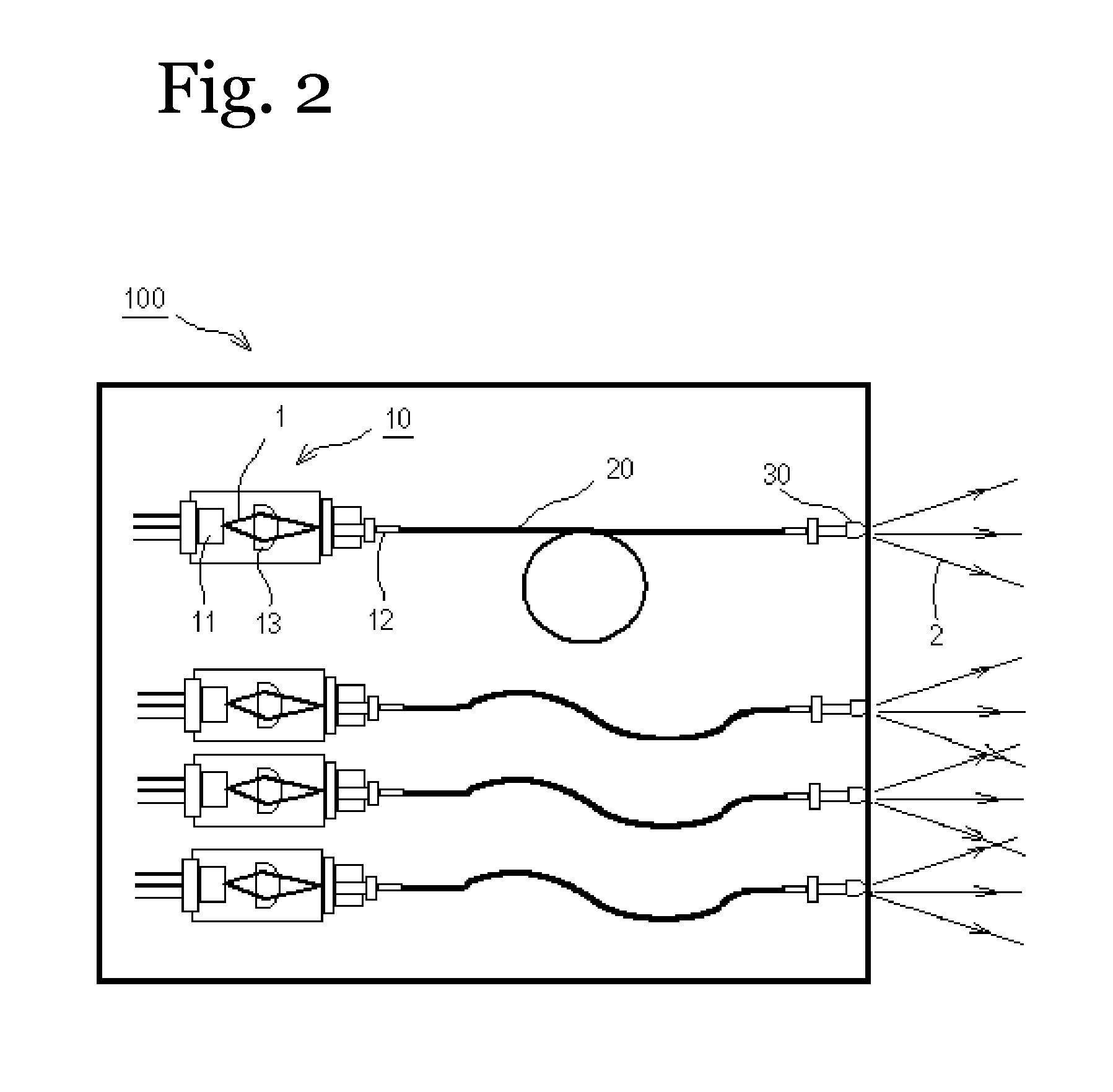Light emitting device
a technology light source, which is applied in the field of light emitting device, can solve the problems of shortening the life of the light emitting device, and achieve the effects of preventing degradation, high brightness, and prolonging the li
- Summary
- Abstract
- Description
- Claims
- Application Information
AI Technical Summary
Benefits of technology
Problems solved by technology
Method used
Image
Examples
embodiment 1
[0179] As shown in FIG. 1, the light emitting device of this embodiment comprises an excitation light source 10, a light guide 20, a mode scrambler (not shown in the figures) and a wavelength converting member 30.
[0180] The excitation light source 10 used a laser diode as a semiconductor light emitting element 11 which has an emission peak wavelength around 405 nm. The laser diode was a GaN type semiconductor element.
[0181] The light guide 20 was connected on one end to the light radiating part 12 of the excitation light source 10, and connected on the other end to the output unit 21. The light guide 20 was made from quartz and for instance was Si 114 (μm:core diameter) / 125 (μm:clad diameter).
[0182] As shown in FIG. 8, the mode scrambler 44 was a comb-like member which periodically mated to the light guide 20 in 4 predetermined locations to provide bends with a bending pitch P of 5 mm and a bending width W of 0.5 mm.
[0183] The wavelength converting member 30 was molded in order ...
embodiment 2
[0191] The light emitting device of this embodiment is essentially the same device as the device of the first embodiment except that 20 beads of approximately 4 mm in size were randomly positioned on the outer circumference of the light guide 20 as a mode scrambler 41 in order to bend the light guide 20 as shown in FIG. 3(b).
[0192] When evaluated similar to the first embodiment, the results showed that the radiation beam profile, luminous flux to light output, and device life were nearly similar.
embodiment 3
[0193] As shown in FIG. 4, this light emitting device was essentially the same device as the device of the first embodiment except that an SUS ferrule was welded as a mode scrambler 42 to create a force in six locations.
[0194] When evaluated similar to the first embodiment, the results showed that the radiation beam profile, luminous flux to light output, and device life were nearly similar.
PUM
 Login to View More
Login to View More Abstract
Description
Claims
Application Information
 Login to View More
Login to View More - R&D
- Intellectual Property
- Life Sciences
- Materials
- Tech Scout
- Unparalleled Data Quality
- Higher Quality Content
- 60% Fewer Hallucinations
Browse by: Latest US Patents, China's latest patents, Technical Efficacy Thesaurus, Application Domain, Technology Topic, Popular Technical Reports.
© 2025 PatSnap. All rights reserved.Legal|Privacy policy|Modern Slavery Act Transparency Statement|Sitemap|About US| Contact US: help@patsnap.com



